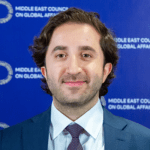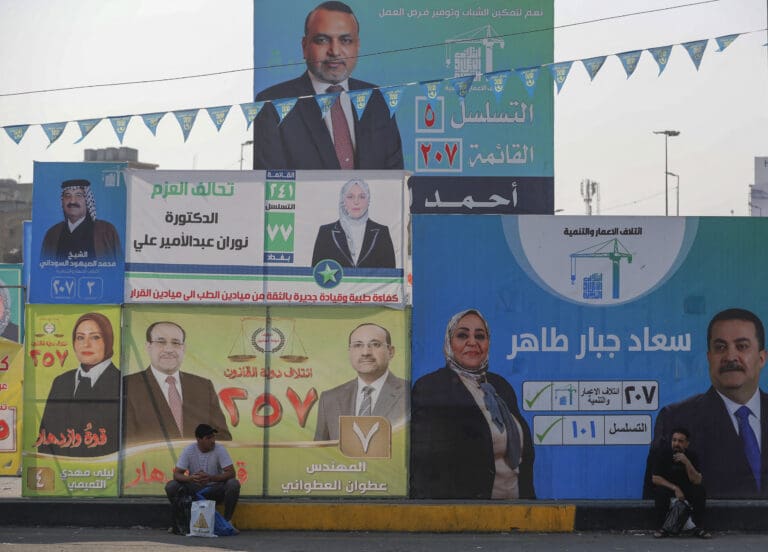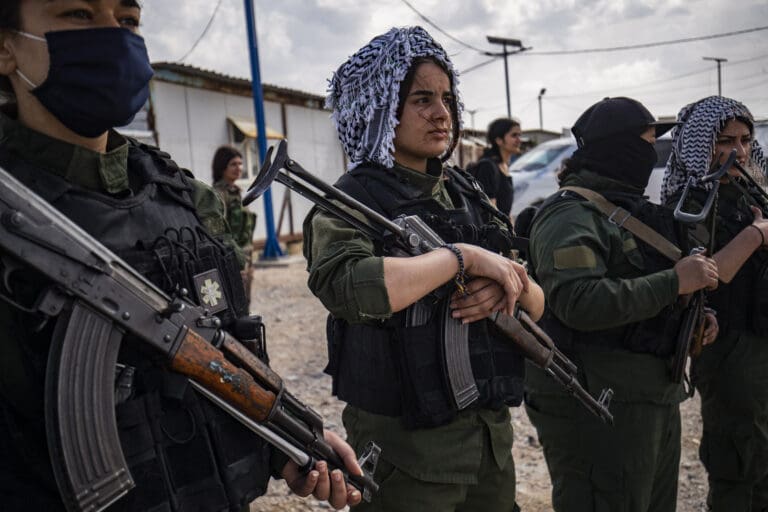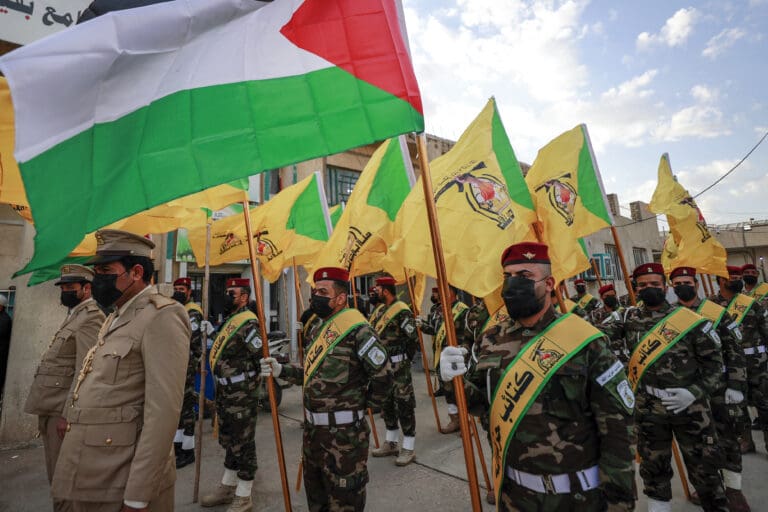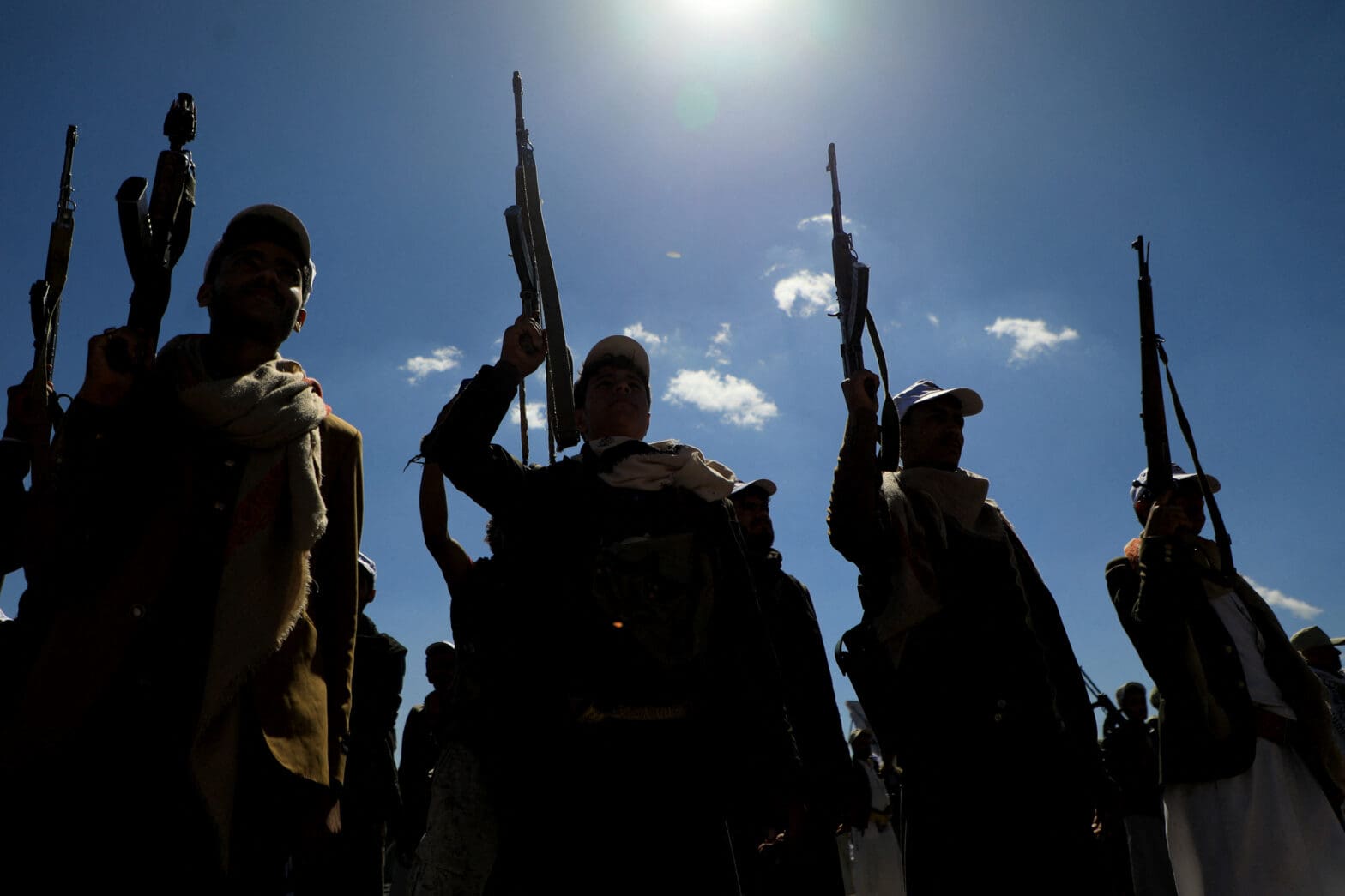
Beyond Mediation:
Rethinking Peacebuilding in a Transnational Middle East
Issue Brief, September 2024
Key Takeaways
Discard the Band-Aid Approach: Long-term peace rarely follows the traditionally advocated band-aid approach. It often perpetuates conflicts which relapse due to unresolved deep-rooted issues.
Focus on the Interconnected Nature of Conflicts: Peacebuilding should not center primarily around states. It should account for the key armed non-state actors that constitute key belligerents and for the inter-connected nature of conflicts in the Middle East.
Security Sector Reform: Long-term peace is intertwined with security sector reforms. Armed groups must eventually be integrated into formal security institutions that are accountable to the local population.
Holding Peace-Builders Accountable: For peace to be sustainable, mediators must be credible and committed. Their role and performance as mediators should be scrutinized.
Introduction
The regional escalation since the war in Gaza unfolded on October 7, 2023, highlights the vulnerability of the Middle East to conflict relapse and the potential for conflicts to engulf the region at large. Devastating proxy wars in Iraq, Libya, Syria, and Yemen over the past decade have paved the way for wide-ranging efforts to forge settlements to these conflicts, with the hope that this will lead to a lasting peace. These efforts include countless cease-fire and mediation tracks aimed at alleviating conflicts and their resulting humanitarian calamities. Expectations of a lasting peace were high when China brokered a peace-deal between Saudi Arabia and Iran last year.1 Many also hoped that some conflict theaters would see reprieve following a series of Iraqi and Omani facilitated talks between Riyadh and Tehran.
However, such hopes have been dashed as a result of the war in Gaza, which has highlighted the limits of mediation efforts. This is a direct result of the intertwinement of the Israeli-Palestinian conflict with the wider contours of regional security. Indeed, achieving sustainable peace is a limited and painstaking exercise: the Middle East has accounted for over a fifth of all conflicts since 2000, and almost 40% of high intensity conflicts.2 Since the onset of conflict and tumult, following the 2011 Arab Spring, several countries have suffered multiple civil-wars and intra-state conflicts, including at least two civil-wars in Iraq and Libya.3
To compound matters, armed groups have proliferated in the absence of weak or non-existent state institutions and authorities. Such actors have also developed transnational capabilities that have seen them multilaterally connect to strategic institutions and infrastructure that traditionally fall under the purview of the state, including banks, ports, and maritime trade. This has presented implications for global security, as notably portrayed by Houthi attacks in the Red Sea.4 Armed groups have weaponized this inter-connectivity as coercive leverage, and intertwined several conflicts, which has added to the challenge of achieving peace and stability.
The transnational character of warfare and the conflicts that have gripped the region over the past decade highlight the urgent need for alternative, sustainable, and realistic approaches to peacebuilding. The ongoing rapprochement in the Gulf Cooperation Council (GCC), and between Türkiye and the United Arab Emirates, has induced the notion of a regional de-escalation that could pave the way for increased co-operation and collective security.5 Mediation has helped either contain conflict or enable humanitarian reprieve. Notable examples include Qatar’s role in facilitating humanitarian access and ceasefires in a number of conflicts, Iraq’s role in managing tensions between Saudi Arabia and Iran, and Oman’s mediation efforts between the United States and Iran.6
However, it is also important to recognize the limits of such frameworks and to engage conflicts in the Middle East as they are: transnational, inter-connected, and subject to relapse. Regional peacebuilding has been largely premised on inter-state co-operation but this is flawed as a result of the role played by an entire constellation of armed non-state actors who constitute belligerents, in their own right, and act independently of outside sponsors. In addition to inter-state co-operation, existing proposals for regional peace are primarily centered on long-standing norms such as sovereignty and non-interference in the internal matters of state. This is problematic and unrealistic because of the transnational nature of warfare in the region, the proliferation of armed groups, the overlap between conflicts and their belligerents; and the enabling role played by external actors across several geographic borders.
This issue brief examines the underlying challenges facing peacebuilding processes in the Middle East and the limitations of excluding non-state actors in these processes. It undertakes a particular analysis of local peace-building efforts in northern Iraq and Libya, and a geopolitical analysis of peacebuilding between Saudi Arabia and Iran. It explains that peacebuilding should be centered around the inter-connected nature of regional conflicts and the inclusion of state and non-state actors that constitute key belligerents. It also highlights the importance of scrutinizing peace-agreements and mediators to ensure peace-building efforts live up to their expectations and do not become political or symbolic exercises.
Cross-Border Complications in Local Peacebuilding
Despite challenges, peacebuilding frameworks can play an important role in mitigating the impact of conflict. For each of the devastating conflicts, atrocities, and upheavals that make the headlines, there are also peacebuilding efforts that have yielded some positive outcomes, even if they have struggled to live up to initial expectations.
Such efforts include the Libyan Political Dialogue Forum (LPDF), which resulted in an agreement that was heralded as unique and impressive.7 At its essence, the agreement contained the civil war that erupted after Khalifa Haftar –– backed by Russia, Egypt, France and the UAE –– launched a failed offensive into Tripoli in 2019.8 Similarly, the Iraqi federal government and the Kurdistan Regional Government (KRG) signed the Sinjar Agreement, which envisages federal authority over the area and the withdrawal of all armed groups, including the Kurdistan Workers’ Party (PKK) and Iran-aligned militias. The agreement was celebrated by the United Nations as an important lynchpin for addressing long-standing issues over the disputed territories, which has a geopolitical dimension to it because the area is also contested by Iran and Türkiye.9
In both Iraq and Libya, peacebuilding efforts have been complicated by the cross-border characteristics of warfare. Much like other parts of the region, this has seen vast stretches of territory come under the control of a plethora of armed groups that have significant cross-border ties or receive patronage from external actors. In the case of Libya, the LPDF undertook the arduous task of managing entire constellations of armed groups representing both warring coalitions engaged in the 2019 Libyan civil war. Over 400,000 security personnel are estimated to operate on the payroll of various Libyan authorities, which constitutes around 6% of Libya’s population of 6.8 million.10 This has created patchworks of security providers numbering in the tens of thousands and has presented foreign powers with openings to impose their influence over the country. The framework initiated by the LPDF has come under pressure, as a consequence, highlighting the fragility of peace agreements that fail to account for or struggle to mitigate the influence of external actors.
Progress has also stalled because of a combination of interconnected domestic and exogenous factors. The LPDF paved the way for a Government of National Unity (GNU) and an assembly of Libyan representatives comprising seventy-five members of multiple constituencies, which elected a three-person interim Presidential Council headed by Mohamed Menfi, President of the Presidential Council, and Prime Minister Abdul Hamid Dbeibah.11 As part of the agreement, elections were scheduled for December 2021, which would have cemented the post-conflict political settlement and, in theory, paved the way for a lasting peace. However, the implementation of the agreement proved difficult due to long-running political rivalries and disputes over electoral eligibility requirements. The implementation of the agreement has also been impeded by ambiguities, loopholes, and technical shortcomings.12
The failure to hold elections in December 2021 represented the culmination of an inflection point from three months earlier that saw the Haftar-controlled parliament in the East pass a vote of no confidence in the GNU.13 This was in response to Tripoli’s rejection of an Eastern-proposed and ratified electoral law that would allow Haftar to make a run for the presidency.14 Almost a year later, in March 2022, the Eastern administration then moved to form an executive body, resulting in two separate Libyan administrations and prime ministers.15 Against the backdrop of these volatile domestic political dynamics, foreign troops, funded by Türkiye, Russia, and others have maintained their presence in the country.16 The stalemate has been exploited by outside actors who have used the lull to widen their geopolitical interests.17 Earlier this year, Abdoulaye Bathily, former Special Representative of the UN Secretary-General for Libya and head of the UN Support Mission in Libya (UNSMIL) resigned in protest of an “ongoing scramble for Libya’s territory” by foreign actors.18 Bathily even went as far as cautioning that progress is not possible without the approval of the international backers of the country’s most powerful political groups.19
In the case of the Sinjar Agreement, PKK affiliates in Sinjar rejected the agreement, which called for the expulsion of groups such as the Sinjar Resistance Units. These groups had moved into Sinjar from neighboring Syria and Türkiye in the wake of the 2014 ISIS offensive with ambitions to turn Sinjar into a self-governing canton.20 Sinjar, as well as surrounding areas such as Tal Afar, are part of an important supply line for both the PKK and the Iranian-backed Popular Mobilization Force (PMF) and their operations in Syria.21 It hosts tunnels, weapons storage facilities, and its mountains provide both a launch-pad and sanctuary for the PKK.22 The two groups are in an unconventional alliance where the PMF funds affiliates of the PKK.23 Like the PKK, the PMF has also rejected the Sinjar Agreement, since it calls for transferring the PMF’s security responsibilities to the Iraqi state.24
Even the most powerful external actors have limits to their influence. Despite the close relationship between the United States and the YPG, the latter has continued to undermine U.S. interests and allies across the border in Iraq, where the PKK has resisted the Sinjar Agreement and violently imposed its presence on local authorities.25 Both the PKK and the PMF have escalated their attacks on Turkish bases in northern Iraq since the signing of the Sinjar Agreement.26 The mobilization of the PKK and its affiliates has, in turn, prompted Turkish military incursions into northern Iraq and has consequently intertwined the Syrian and Iraqi conflict theatres and transformed the area into a hub for violent geopolitical contestations. To compound and complicate matters, groups such as the Sinjar Resistance Units fill their ranks with local Yazidis, which adds an indigenous component to their presence and allows the PKK affiliate to claim it is an Iraqi organization comprised of discontented members of the local population.27
Cross-Border Implications: The Saudi-Iran Rivalry & Armed Groups
In the cases of Libya and Sinjar, external actors complicated peacebuilding efforts amongst various armed non-state and political actors. The opposite can be observed in the case of inter-state peacebuilding efforts between Saudi Arabia and Iran, where armed groups have complicated peace between the two countries and in the wider region. The issue in this context is that armed groups have been treated as secondary actors or byproducts of the rivalry between the two regional powers rather than belligerents in their own right. It is therefore not the absence of certain states from peacebuilding frameworks that has obstructed sustainable peace but, rather, the marginalization and exclusion of armed groups, or their dismissal as viable negotiating parties.28 Proponents of inter-state peacebuilding effectively gloss over deep-rooted issues as a result, with the hope that these will eventually be addressed by initial, essentially incomplete, peace agreements.
The International Crisis Group (ICG) recently called for Tehran and Riyadh to “establish a joint coordination council to develop specific plans, with timelines, to deliver concrete returns and lend momentum to rebuilding relations.”29 However, the proposal is entirely premised on the idea that Iran can mobilize and de-mobilize its militia allies at will. It also attributes Houthi attacks on Saudi facilities to Iran and disregards the indirect nature of their conflict.
Saudi Arabia and Iran have come close to direct confrontation30 but the nature of the conflict between these two countries is largely an indirect one that is conducted by armed groups with their own agency and calculations. The attacks on Saudi Arabia’s oil infrastructure were launched by the Houthis, while other attacks on GCC states have been launched by militia groups based in Iraq.31 Saudi Arabia, for its part, has backed armed groups in Syria against Iran-backed groups. Riyadh has also been accused by Tehran of backing militant groups within Iran.32 It, therefore, seems counter-intuitive to premise recommendations that do not account for the key armed groups that are not necessarily fighting on behalf of either of the regional powers.
Peace and reconciliation between Saudi Arabia and Iran are paramount considering their fierce rivalry and conflicted visions for the Middle East. Both countries are developing security frameworks designed to be exclusionary. Saudi Arabia is an active ally within the West’s security architecture in the region and is also a driving force behind the idea of an “Arab NATO” designed to counter Iran’s influence in the Middle East.33 Conversely, Iran’s “Axis of Resistance” aims to enhance Iran’s geopolitical standing and widen its influence in the region. These security frameworks represent a zero-sum approach to regional security and, therefore, compound regional instability and threats. However, there are a number of key reasons why inter-state peacebuilding has its flaws and why peacebuilding must move beyond the inter-state framework.
Armed groups do not depend on external support given the tremendous resources at their disposal domestically. A globalized international order also provides them with multiple sources of financing streams, stemming from illicit cross-border trade, foreign patronage, natural resources and the extortion of local communities. The U.N. Security Council estimates that the Houthis diverted over $1.8 billion designated to the government in 2019 to fund their operations, and control legal and illegal sources of revenue, including a khums (one-fifth) tax on many economic activities and sectors.34 The UAE-backed Southern Transitional Council in Yemen generates revenue from ports, customs, taxes, and the oil sector.35 Iraq’s PMF, in addition to having access to a budget worth at least $2 billion,36 has also recently established a state-backed trading body. Conversely, groups in Syria and Iraq, previously backed by Saudi Arabia, have expansive revenue streams that are derived from illicit trade, oil smuggling, and extortion.37 This imposes limitations on the ability of regional powers to influence such groups.
In excluding armed groups or being dismissive of their viability as negotiating parties, observers adopt a band-aid approach that compounds the problem. The ICG, for example, called for the return of the Assad regime to Syria’s southwest in 2018 unaccompanied by Iran-backed groups. These groups had been a source of tensions for rebel groups, hoping to take control of the territory, as part of the uprising, as well as for Israel because of the threat presented to the country by Iran’s proxies.38 However, the proposal either under-stated or was complacent about the nature of the conflict, one in which Iran-backed groups were intertwined with regime forces and were formidable on-the-ground actors that the regime depended on for its survival. Unsurprisingly, within a matter of months, the ICG acknowledged that the regime had returned to the area with Iran-backed forces, with precarious implications for peace and the well-being of the local population.39 In other words, it was counter-intuitive to assume that the regime could restore its authority in the southwest without Iran-backed groups.
Armed Groups as Viable and Credible Negotiators
Crucially, inter-state peacebuilding disregards domestic and indigenous dynamics: armed groups are a manifestation of domestic political and socio-political grievances. Although it may be argued that including militant groups in formal peace negotiations would enhance their legitimacy and compound the problem, engaging with these groups does not necessarily equate with appeasing them or precluding a state’s actual or perceived right to militarily target them in the event negotiations fail.
Moreover, armed non-state actors are capable of engaging in peace negotiations involving states. The PA-X Peace Agreement Database, which provides a repository of peace agreements from 1990 to 2023, shows that it was localized belligerent groups that struck almost all of the agreements concluded during this period.40 Importantly, almost all these deals were struck without the involvement of the government or the international community. The ability of armed groups to negotiate with their rivals has been further illustrated by the move towards non-aggression agreements between Hezbollah and Israel, the PKK and Türkiye, and the Houthis and Saudi Arabia.41
These agreements were transactional, premised on pragmatic considerations and were implemented predominantly by the armed groups, with some support from outside actors. The 2013 peace deal between Türkiye and the PKK, long encouraged and backed by the European Union, was underscored by President Erdogan’s political aspirations, wide-spread public sentiment that the PKK could not be defeated by force, and a ceasefire announcement from the PKK.42 Similarly, the agreement between Saudi Arabia and the Houthis, backed and encouraged by several GCC states, the United States and China, was underscored by Riyadh’s economic modernization agenda, the futility of its military campaign in Yemen and the need to mitigate geopolitical tensions as it embarks on its economic diversification program.43 Lastly, the agreement between Israel and Lebanon, including Hezbollah, backed by the United States, was premised on Hezbollah’s belief that the demarcation agreement could alleviate Lebanon’s economic crisis and enhance the organization’s political and economic position.44
Despite ongoing regional tensions and the escalation between Iran and Israel, and between Hezbollah and Israel, the 2022 maritime agreement has held. Moreover, the Houthis have not resumed their attacks on Saudi Arabia since the Chinese-brokered peace agreement between Saudi and Iran was concluded last year, even as the group continues its attacks in the Red Sea. These case studies help inform peace-building efforts in northern Iraq, Libya, and other conflict theatres by highlighting that you do not necessarily need to include all armed non-state actors but only the key belligerents and that even the most ideologically committed actors are capable of negotiating with their rivals.
Conclusion: Moving Forward
Rather than aim for coalitions of the willing that create a “them and us” dividing line, a comprehensive peace-agreement should be centered around both the state and non-state actors that constitute key belligerents, and the interconnected nature of regional conflicts. This is not a matter of simply including several conflicts into peacebuilding frameworks but engaging each conflict and its belligerents in equal measure. Armed non-state actors are capable of peace, are engaged for humanitarian and diplomatic purposes, and constitute the sole or predominant authority in large swathes of territory. As a result, it is plausible to suggest that such actors also constitute important components of a wider regional settlement. Undertaking peacebuilding with this in mind accommodates the entire constellation of domestic and external actors and stays true to the principles of collectiveness and inclusiveness.
Existing proposals premise their agreements on a comprehensive and long-term peace that is centered on relations between Saudi Arabia and Iran. However, regional conflicts and their belligerents are interlinked: it makes little sense to premise peace agreements principally around regional powers such as Saudi Arabia and Iran who have significant limits to their influence. Fundamentally, aside from their own independent revenue streams and access to weapons and fighters, the armed groups that Saudi Arabia and Iran support have their own political and geopolitical calculations and would not necessarily disengage from conflicts even in the event that their sponsors reach a settlement.
Crucially, mediation that is centered on the local, national, and the regional empowers citizens and the vulnerable, creating wider and more effective opportunities and platforms for voicing their discontent, addressing their grievances, and engaging external actors, as highlighted by the LPDF and the Sinjar Agreement. Outside powers have exploited these grievances and contestations to turn socio-political movements and armed groups into proxies for their own regional ambitions. However, this has also created substantial principal-agent problems since sponsoring states can never be sure that proxies would not use the support for their own, more parochial ends. Proxies, in turn, have had an incentive to keep fighting.
In this same vein, long-term peace is intertwined with other processes such as security sector reforms, which generally adopt a one-size-fits-all approach that attempts to accommodate the entire landscape of armed groups. However, this is an ill-fitted approach to the hybrid security orders that shape the transitioning countries of the region. In large part, this is because such processes are not underpinned with oversight mechanisms that ensure accountability and allow reforms to take place in an environment that is conducive to the rule of law. There is a mismatch between state-centered models of security assistance and realities on the ground: armed non-state actors are more than just anomalies or spoilers and represent, in some cases, legitimate socio-political actors that have significant legitimacy and popular support.
Peacebuilding will be undermined and torpedoed unless mediation moves beyond political symbolism. Although there are several instances where mediation has been crucial to alleviating conflicts and addressing humanitarian crises, mediation also risks becoming a political or symbolic exercise. In this vein, mediators generally accrue all the political benefits and capital that comes with the role –– as in the case of China’s brokering of a peace deal between Iran and Saudi Arabia –– but escape scrutiny where these agreements do not live up to expectations or yield limited outcomes. As a result, there is a need to hold mediators accountable and encourage such actors to openly acknowledge their shortcomings. This ensures that mediators maintain a long-term vested political interest in implementing the principles and terms of peace agreements. This would also foster a genuine commitment to peace, rather than a short-term exercise that is premised on short-term political objectives.

